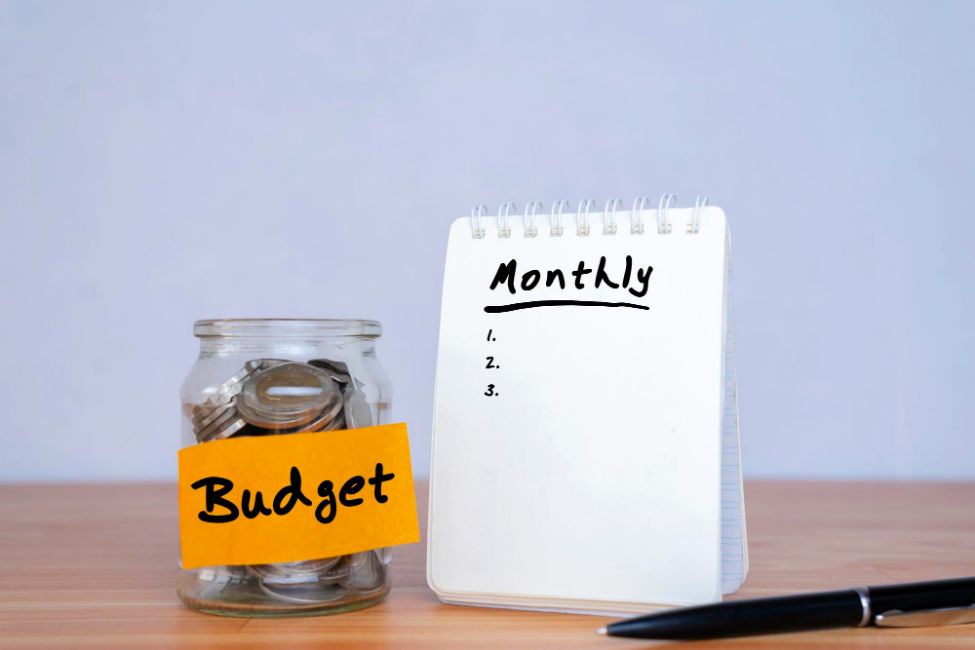The leading social media platforms' ads constantly turn your browsing sessions into impulsive shopping expeditions. It's time to channel your inner saving ninja and learn how to taekwondo the urge to make impulsive purchases. In the United States, monthly spending on impulsive purchases averages over $300. That totals $3,600 annually per person!
Impulsive shopping is when you go to the store to buy milk and bread but leave with a new outfit or a fancy gadget. Don't worry! You have it! All you need to do is keep the urge to buy something novel or exciting in control. We've outlined five effective techniques to help you stick to your budget and make smart financial choices. So, let's dig in….
Impulsive Buying: The Cycle That Never Ends
But first, let's take a moment to discuss why it's important to refrain from impulsive purchases. The results are horrifying because people are compelled to make purchases on credit cards one after another, increasing debt and financial losses. Once you comprehend the impulsive purchase process, it becomes clear which strategy should be used to make wise financial decisions. Impulsive purchases are created instantly because of poor cognitive restraint and intense emotional activity. It starts with a specific product feature grabbing your attention and instilling a strong desire to purchase.
Followed by a powerful urge to make a physical or online purchase. The following are the compelling steps:
- Attention: Ads displays or social media platforms inform about products or services.
- Interest: Products are chosen based on value or features.
- Desire: Fear of missing out influences the need to own the product
- Impulse action: An on-the-spot decision to buy without evaluating
- Purchase: Acquiring the product online or physical
Strategies for Sticking to Your Budget
If you understand the impulsive purchase process above, you understand that as soon as you overcome your impulse, you are on track to developing mindful spending habits.
Strategy 1: Create a Budget and Set Financial Goals
The word budget often conjures up a burdensome image. Sometimes, you just do all the rough calculations in your head. However, if you wish to spend your income and expenses wisely, it is better to jot them down. It identifies areas where you can allocate your income.
For instance, if you want to pay off that debt hanging over your head or take that pending vacation that has been pending for years, making a budget can help you achieve these yearly goals by cutting down on temptations. You can draw a table in Excel and make an expense tracking table to keep track of your expenses.
However, you can also try other useful online budget templates, which will give you a picture of the cost-conscious behavior you should adopt to achieve financial stability. For example, many budget apps connect to your financial account and track and categorize expenses, so you don't have to write everything down.
Moreover, monthly budgeting will give you a clear picture of your long-term financial goals. When you track and maintain a budget, you are more likely to fill in the details correctly and fight irrational spending. You devise a precise system for making economic decisions and avoiding impulse purchases. Pay your utility bills on time, save money for your loved ones, and treat yourself by taking a vacation.
Strategy 2: Identify Your Triggers and Temptations
Looking at the impulse purchasing process above, you will understand that every purchase begins with a trigger. You may discover a new product or technology online while using Facebook, encouraging you to purchase it; therefore, like and follow skill development pages on Facebook rather than just product brand pages.
It's important to take the time to track your own emotions to determine what triggers you. This self-awareness can help you better manage your reactions and responses in triggering situations. For instance, some people can't resist their food cravings and just have to get that cheesecake, but knowing what makes them crave certain foods, they can cope better. On the other hand, others simply can't stop themselves from buying shoes and clothes and end up using their credit card to make purchases. Consequently, most of the time, you do not require a product, but an impulse is triggered, and you are forced to buy it. Thus, you are the only one who can control these irrational desires and cut costs.
Consequently, rather than simply scrolling from one social media platform to the next, engage yourself in more mindful activities such as reading, cooking, painting, etc. The only way to reduce the impact of emotion on impulse purchases is to raise household budgeting awareness. Put down your phone if you frequently shop online to avoid situations or circumstances that trigger that impulse. If you can't control your impulses at the mall, try walking through the park instead.
Strategy 3: Practice Delayed Gratification
You can control impulse buying with a simple technique, i.e., take a break from social media! Social media advertising that is bright, flashy, and glittery harms purchasing habits. Increased innovation and competition also lead to increased online impulse purchases. Subsequently, here comes a strategy called "Delayed gratification," which refers to postponing your desires or wishes in exchange for a better reward in the future. Regardless of the factors that influence impulse buying, such as discount offers, product display, product nature, and so on, this is the best tool for cutting costs and sticking to your budget.
There are numerous techniques available to assist you in making sound financial decisions. You can set a no-spend challenge for yourself every week and try to cut back on your favorite treats while creating a money-saving box. Instead of eating out frequently, try cooking healthy meals at home and learning to prioritize your expenses by creating a budget. Avoid expensive perfumes, makeup, and clothing you don't need. It is also critical to compare prices and look for bargains before making any purchases.
Gratification is essential in combating all of the negative effects of social media. The influence of digital word-of-mouth on online impulse purchasing behavior is enormous, but combating it requires courage. It's all a mental game once you realize the problem. Express gratitude for what you own and persuade yourself that it is sufficient.
Strategy 4: Utilize Shopping Lists and Stick to Them
Keeping a monthly shopping list saves time and effort. You can also maintain a balanced eating lifestyle when you create a healthy and affordable grocery list. In a survey, 33% of buyers admitted that a shopping list helps them stay on a budget. Thus, now you would know what you need to do next, right?
A monthly shopping list saves not only your time but also money. Instead of going to the mall for groceries regularly, you can use that time to invest in some other relaxing activities. You can create a shopping list that includes the following categories: meat, toiletries, fruits and vegetables, dairy, and frozen foods. You can benefit from updates on discounts, coupons, and special offers if you keep a regular list.
According to 44% of shoppers in Field Agent's survey, using a shopping list helps save money. When you follow a list, you know which aisle to start with and which aisle to go to next. It makes the shopping and the pantry more structured—less buying results in less clutter and more rational spending.
Strategy 5: Implement the 24-Hour Rule
An impulsive purchase results from a product connection, stress, or simply for entertainment or celebration purposes. An excessive attachment to social media platforms also triggers purchasing impulses. Online product reviews can sometimes act as a purchase trigger. In this case, try the 24-hour Rule.
It is a deliberate decision to wait 24 hours before making a purchase. So, despite your desire to make an impulse purchase, you must wait 24 hours before proceeding. It is based on the idea that if you sleep with the thoughts about purchasing a product, the desire to purchase that product may die or diminish to the point where it does not feel as important as the day before.
If you are seriously considering purchasing something, using cash rather than a credit card is a good way to avoid interest charges. Avoid shopping on days when you are depressed or overjoyed. It is better to avoid online shopping. Ask yourself whether the purchase is important or not. Take a friend who might advise you to spend or not. Looking for cheaper options is also a good strategy to stay within your budget.
Let’s Put a Full-Stop to Your Impulsive Buying!
In a nutshell, sticking to a budget isn't a difficult task. Effective budgeting and shopping lists are essential tools for combating the temptations of impulsive buying. It is critical to maintain good psychological health to avoid social media persuasion tactics. Implementing the 24-hour rule and delayed gratification daily can yield tremendous results. Consequently, which of the above budget-sticking tips are you going to try?




